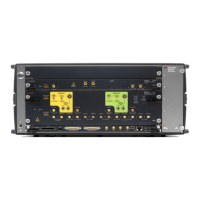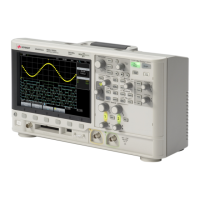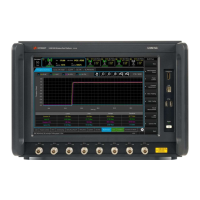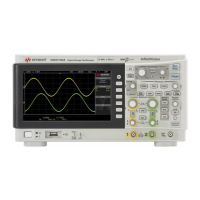508 Keysight M8000 Series of BER Test Solutions User Guide
8 Working with Measurements
Jitter Tolerance Measurement
Overview
A Jitter Tolerance measurement is used to determine the ability of a
device or system to maintain communication quality in the presence of
jitter. It comes in two varieties:
• Jitter Tolerance Characterization determines the jitter levels where the
device under test can no longer maintain a desired bit error ratio (BER).
• Jitter Tolerance Compliance verifies that the device under test is able
to maintain a BER level at pre-defined jitter levels and jitter frequencies,
as defined by a standard.
The basic setup of a jitter tolerance test is illustrated below:
Understanding Jitter Tolerance
The behavior and the passed/failed classification of data receiving devices
or circuits are determined by their ability to withstand:
•Jitter
• Intersymbol interference
•Level noise
This refers particularly to the performance of phase-locked loops (PLLs) or
clock data recovery circuits (CDR).

